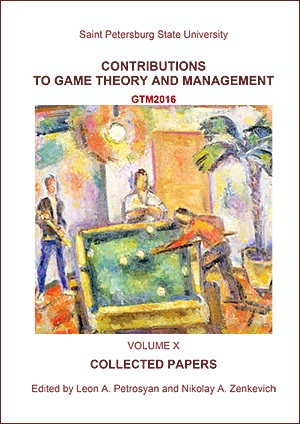Cooperation in Bioresource Management Problems
Abstract
This paper is devoted to overview of the previously available and the author's own results of cooperative behavior analysis in dynamic games related to bioresource management problems. The methodological schemes to maintain the cooperation are considered and modified. The incentive condition for rational behavior and characteristic function construction method are presented. The question of coalition stability is revised and extended. The cooperative behavior determination schemes for games with asymmetric players are obtained. Some analytical and numerical modelling results for particular dynamic bioresource management problems are presented.
Keywords:
dynamic games, bioresource management problem, Nash equilibrium, cooperative equilibrium, incentive equilibrium, dynamic stability, imputation distribution procedure, incentive conditions for rational behavior, coalition stability, asymmetric players, different planning horizons
Downloads
References
Downloads
Published
How to Cite
Issue
Section
License
Articles of "Contributions to Game Theory and Management" are open access distributed under the terms of the License Agreement with Saint Petersburg State University, which permits to the authors unrestricted distribution and self-archiving free of charge.




